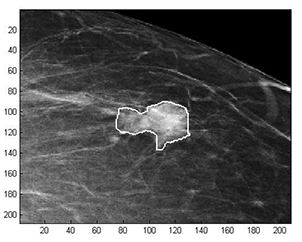Latest News Archive
Please select Category, Year, and then Month to display items
07 March 2025
|
Story Anthony Mthembu
|
Photo Supplied
 Crystal-Donna Roberts, recipient of the 2016 Kovsie Ambassador Award and award-winning actress, has died following a battle with breast cancer.
Crystal-Donna Roberts, recipient of the 2016 Kovsie Ambassador Award and award-winning actress, has died following a battle with breast cancer.
The University of the Free State (UFS) is deeply saddened by the passing of alumna and award-winning actress Crystal-Donna Roberts at the age of 41. According to Eyewitness News (EWN), Roberts passed away during the early hours of 6 March 2025, following a long battle with breast cancer.
The UFS extends its deepest condolences to Roberts’ family, friends, colleagues, and supporters.
Celebrating a beloved actress
Roberts graduated from the UFS with a BA Drama and Theatre Arts degree in 2005 and went on to create work that was beloved across the country and beyond. She starred in the Afrikaans soap opera 7de Laan and shows like Getroud Met Rugby, Montana and Vallei van Sluiers, among others. Her lead role in the film Krotoa earned her the Best Actress award in 2018 at the South African Film and Television Awards (SAFTAs).
Her extensive career in film and television was one of the reasons she was recognised by the UFS with the Kovsie Ambassador Award in 2016. This is an award given to alumni whose accomplishments have not only benefited themselves but their community and the UFS. Although Roberts was well-known for her work on stage and screens, she was also an author. She released her debut novel Speurder Sammi: Die blou steen (Detective Sammi: The Blue Stone) in 2022.
Outpouring of praise
Since the news of Roberts’ passing broke, there has been an outpouring of tributes on social media. Many of her supporters and colleagues have described her as an iconic force who was full of life and inspired many. Alistair Izobell, who starred alongside Roberts in Arendsvlei, responded to the news through a Facebook post which said, “My dearest sister Crystal-Donna Roberts my heart is broken today. You got your wings and your pain is no more. I am thrilled I got to do a chapter of my life with you. I will remember you with the great spirit you were. Now rest sweetly.”
Mathematical methods used to detect and classify breast cancer masses
2016-08-10
 Examples of Acho’s breast mass
Examples of Acho’s breast mass
segmentation identification
Breast cancer is the leading cause of female mortality in developing countries. According to the World Health Organization (WHO), the low survival rates in developing countries are mainly due to the lack of early detection and adequate diagnosis programs.
Seeing the picture more clearly
Susan Acho from the University of the Free State’s Department of Medical Physics, breast cancer research focuses on using mathematical methods to delineate and classify breast masses. Advancements in medical research have led to remarkable progress in breast cancer detection, however, according to Acho, the methods of diagnosis currently available commercially, lack a detailed finesse in accurately identifying the boundaries of breast mass lesions.
Inspiration drawn from pioneer
Drawing inspiration from the Mammography Computer Aided Diagnosis Development and Implementation (CAADI) project, which was the brainchild Prof William Rae, Head of the department of Medical Physics, Acho’s MMedSc thesis titled ‘Segmentation and Quantitative Characterisation of Breast Masses Imaged using Digital Mammography’ investigates classical segmentation algorithms, texture features and classification of breast masses in mammography. It is a rare research topic in South Africa.
Characterisation of breast masses, involves delineating and analysing the breast mass region on a mammogram in order to determine its shape, margin and texture composition. Computer-aided diagnosis (CAD) program detects the outline of the mass lesion, and uses this information together with its texture features to determine the clinical traits of the mass. CAD programs mark suspicious areas for second look or areas on a mammogram that the radiologist might have overlooked. It can act as an independent double reader of a mammogram in institutions where there is a shortage of trained mammogram readers.
Light at the end of the tunnel
Breast cancer is one of the most common malignancies among females in South Africa. “The challenge is being able to apply these mathematical methods in the medical field to help find solutions to specific medical problems, and that’s what I hope my research will do,” she says.
By using mathematics, physics and digital imaging to understand breast masses on mammograms, her research bridges the gap between these fields to provide algorithms which are applicable in medical image interpretation.